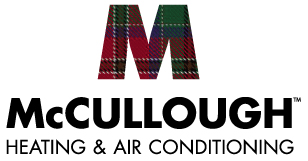4.8 Google Rating
Attic Insulation in Austin, TX
Why Attic Insulation is Essential for Your Austin Home
Attic insulation plays a critical role in maintaining comfort and energy efficiency in your Austin home. Without proper insulation, your home can lose up to 25% of its heating and cooling through the roof, causing your HVAC system to work harder and increasing your energy bills. By investing in quality attic insulation in Austin, TX, you can significantly reduce energy waste, lower your utility costs, and extend the life of your heating and cooling equipment.
Austin attic insulation also helps regulate indoor temperatures, keeping your home cool during the hot Texas summers and warm during the cooler months. This not only improves comfort but also provides long-term savings. Whether you’re building a new home or upgrading your current insulation, McCullough Heating & Air Conditioning offers the best solutions for attic insulation Austin homeowners can rely on. Improve your home’s energy efficiency and comfort with our professional insulation services!
Benefits of Professional Home Attic Insulation Installation by McCullough Heating & Air Conditioning
Many homeowners overlook their attic space and its insulation needs. However, in the Austin, TX climate, adding insulation to your attic can provide significant benefits to your home comfort. McCullough Heating & Air Conditioning offers reliable attic insulation services in Austin to ensure your attic is properly insulated. Our trained technicians possess the skills and expertise necessary for effective insulation installation. Here are some key advantages of choosing our professional attic insulation installation services:
- Reduces Utility Bills: Proper attic insulation can lead to significant savings on your monthly utility bills by preventing air leaks and allowing your HVAC system to operate more efficiently.
- Improves Air Quality: Insulation helps block air pollutants like dirt, debris, and mold from entering your home, enhancing indoor air quality and alleviating respiratory issues for occupants.
- Prevents Ice Dams: Adequate insulation can help prevent ice dams from forming on your roof during Austin’s cold winters, protecting your property from potential damage.
- Prevents Frozen/Burst Pipes: Insulating your attic keeps your home warmer in winter, reducing the risk of frozen pipes—a costly and damaging issue that many homeowners face.
- Deters Pests: Filling your attic with insulation can help keep unwanted pests and rodents at bay, resulting in fewer hazards for your family.
- Reduces Noise: Insulation also helps minimize noise, creating a quieter and more serene home environment, beneficial for those who need a peaceful atmosphere.
- Extends Roof Lifespan: Installing insulation can prolong the life of your roof by preventing condensation and wood rot, ultimately saving you money on premature replacements.
Common Types of Home Attic Insulation Materials From McCullough Heating & Air Conditioning
When considering insulation for your attic in Austin, TX, several materials can be utilized. The ideal insulation type for your home will depend on its specific structure, and a professional from McCullough Heating & Air Conditioning can guide you in selecting the best option for your home. Here are some common types of attic insulation materials:
- Batt Insulation – Batt insulation is a cost-effective choice that offers basic coverage. Available in various sizes and types, it is generally affordable and quick to install. It works best in attics with standard joist spacing and minimal obstacles.
- Blown-In Insulation – This eco-friendly option is made from recycled materials and is highly energy-efficient, making it suitable for homes experiencing heat loss. Blown-in insulation is often used in attics with irregular joist spacing and more complex layouts.
- Spray Foam Insulation – While less common in residential settings due to its higher cost and permanence, spray foam insulation is available in open and closed-cell varieties and is considered the best insulator. It is typically used in commercial properties and attics with structural or mechanical elements that are not frequently moved.



